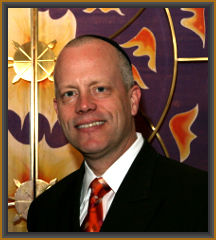
 |
October 28, 2022 (3 Chesvan 5783) Let It Rain Dear Holy Friends, I hope this correspondence finds you doing well and in good health. Please join us this Shabbat at 10:30am for our in-person services, which will also be available on our regular Zoom prayer link. We look forward to welcoming you! Allow me to share with you an interesting paradox found when one juxtaposes the liturgical text of Tefillat Geshem (the prayer for rain, which was recently chanted on Shmini Atzeret) with the scriptural reading of this Shabbat, Parashat Noach. Let us start with some particulars regarding the prayer for rain. Since the fall and winter represent the rainy seasons in the Holy Land, and since the country depends so heavily on rain, the Sages decided that Tefillat Geshem, the prayer for rain, should ideally be recited on Succoth. However, because the festival itself is spent primarily outdoors (i.e. in the Sukkah), they delayed reciting the prayer until Shmini Atzeret, when the obligation to dwell in the Sukkah has concluded. In other words, it would be strange to be commanded to sit in the Sukkah and at the same time, pray for rain, which would be like the Yankees recent post-season, filled with rain outs! In the Tefillat Geshem prayer, we meet Af-Bri, the name of the angel appointed over the rainclouds. The angel’s name is formed from two Hebrew words: Af, meaning anger and Bri, meaning health. This strange construction alludes to the two ways in which rain may fall. Sometimes it comes in harsh torrents and is a sign of Divine anger and at other times, it falls in a beneficial manner to bring health and prosperity, as a sign of Divine favor. As the prayer continues, the liturgist asks Hashem to remember the devotion of six biblical characters: Avraham, Yitzchak, Yaakov, Moses, Aaron, and the twelve tribes. In beautiful poetry, the author suggests that for the sake of these figures, Hashem should not withhold water, but instead abundant rain should fall in their righteous merit. The overall tone of the text presents rain in a genuinely positive manner. Each year, however, the story of Noach and the Ark, almost immediately follows the recitation of Tefillat Geshem. Clearly, in this biblical flood account, rain is seen as destructive and devastating. The overall tone of the text presents rain in a negative manner. To reconcile these two descriptions, the reader of the liturgy needs to flip back to the addendum to the Tefillat Geshem text, which is recited by both the congregation and the Hazzan. In the concluding lines, the prayer says about rain, “For blessing and not for curse; for good and not for evil; for plenty, and not for scarcity.” The overarching message of the texts is that everything that God created in the world has the potential to be used for good or evil. It is in partnership, in community and in covenant, that we as a people can strive to make sure that all that we encounter is raised up to serve the holiest of purposes. Shabbat Shalom, Rabbi Eric Wasser, EdD, Hon.DM
|